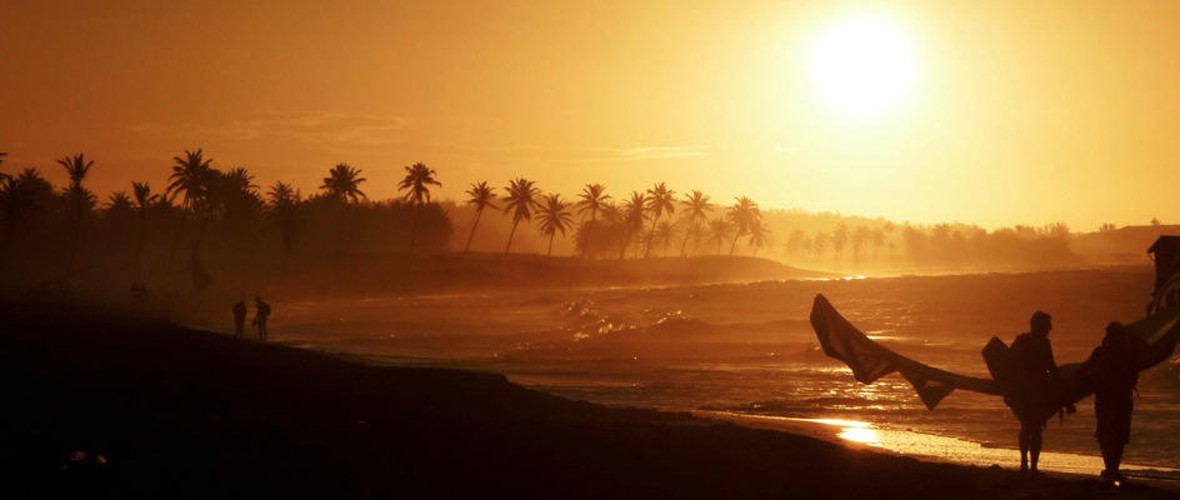Climate
In Cumbuco the sun rises at 05:30 a.m. and sets abruptly at 05:30 p.m. Being only three latitudinal degrees from the equator, the average daily temperature is 28°C, the average night temperature between 20 – 22°C. The sun shines almost eight hours per day (on an average considering the whole year).
The highest guarantee for wind (over 90%) can be found between June and January, outside of the rainy season. In those months there is little rain and the trade wind sets up perfect conditions for kitesurfing with wind speeds of 15 – 25 knots (4 – 6 Beaufort). The wind originates from the south-east and is slightly offshore in the morning. As the day progresses the wind gets stronger and turns slightly offshore. During this time it is easy to get along with a 7 – 12 sqm kite, while at least a 12 sqm kite is recommended during low season.
The current wind forecast for Cumbuco can be found here.
During the rainy season from February to April it can, but very rarely, rain several days in a row and there is only enough wind to kitesurf on some days. On average the wind speed is between 5 – 10 knots (2 – 4 Beaufort) and therefore rather ideal for sailing. And although from a geographical point of view it is summer, the locals speak of winter (“inverno“) during the rainy season.
Of course, these are only statistical values and the weather can develop differently from what is expected. The El Niño phenomenon can contribute to the change in these normal values a lot. As a result, a typical rainy season may not exist. This is catastrophic for nature and harvest, but welcome by all kitesurfing enthusiasts as the trade winds fully develop during these times and make for great kitesurfing conditions.
Trade Winds
The reasons for the fantastic conditions for kitesurfing in Cumbuco are the trade winds. But what exactly are they? Characteristics of trade winds are their high predictability. They appear in tropical areas between subtropical highs and the equatorial low-pressure system. There the air rises, flows in a polar direction until around 30° north or south latitude, drops in the subtropical highs on both sides and as a consequence flows as pressure-balancing trade winds again in an equatorial direction. Due to the diverting force of the earth’s rotation, it is a north wind in the northern hemisphere while the general wind direction in the southern hemisphere originating from the Pacific high is east, south-east or south. Tradewinds (no matter if north-east or south-east trade wind) blow consistently with a speed of 20 – 25 km/h. Due to them transporting dry air, they are responsible for the desert climate in the tropics. Flat cumulus clouds are a clear indication of trade winds.
Now the following happens: in the trade wind zones the air sinks. The air layers, which rise due to the soil heating up, are prevented from rising further. Hence they cannot cool down, condensate and build precipitation clouds. This is called trade inversion. Not until the trade winds converge in the equatorial low-pressure area, the air masses are forced to rise and it rains. On the coasts, with cold sea breezes, this can lead to the development of strong fog, but not precipitation. In the geographical winter months, the trade winds in the corresponding hemisphere are especially pronounced.
Thermal wind
Between 10:00 a.m. and 12:00 p.m. (depending on the season), the thermal wind sets in. It results from the fact that the air above mainland heats up quicker than the air above the sea. The hot air rises and the colder air from the sea follow to fill the resulting vacuum. This results in the perfect wind, making Cumbuco the perfect location for excellent kitesurfing.

